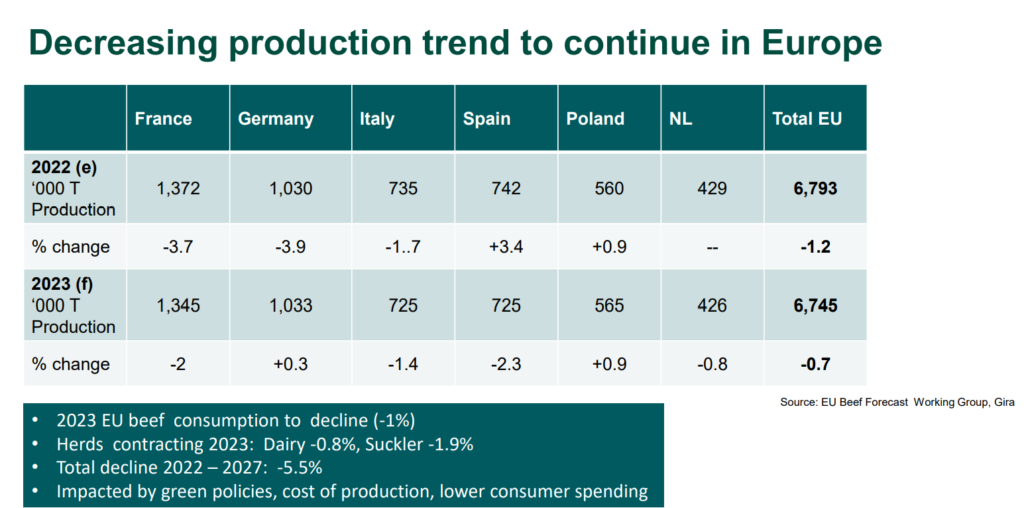The supply of finished cattle in Ireland has been forecast to fall by 50-60,000 head this year, according to Bord Bia projections.
Speaking at the Bord Bia Meat Marketing Seminar in Naas, Co. Kildare today (Friday, January 13), Bord Bia’s beef sector manager Mark Zieg told attendees the supply of finished cattle is forecast to be down by 50-60,000 head or 3% to 4%.
Zieg said that this comes following a high number of cattle killed in 2022 with numbers up 132,000 head on the previous year.
Commenting on the supply outlook for 2023, Zieg said the tight supply of finished cattle is expected to be seen primarily in the first half of the year and noted that supplies will likely increase in the second part of the year with “a few more cattle” available in the final quarter of 2023.
He also outlined that the high level of cows that were slaughtered in 2022 “might not be seen in the first half of 2023”.
Commenting on the composition of the beef kill in 2022, Zieg noted “lighter carcass weights” were seen in all types of cattle and said “cattle were being finished younger”.

He attributed the lower carcass weights and younger slaughter ages primarily to high feed costs.
As the table above indicates, the average cow carcass weight fell by almost 14kg and Zieg attributed this to “farmers availing of a strong cow price and culling cows without putting too much feed into them”.
Europe and UK supply situation
Commenting on the supply situation in Europe, Zieg said: “You can see a lot of decline in the big markets both last year and this year in general as well.”

“That’s because the European herd is contracting, the dairy herd by 0.8% and the suckler herd by 1.9% and a long-term decline is being projected of 5.5% up to 2027.”
In the UK, Zieg said: “We’re seeing a slight increase in the UK beef production trend.”
The table below shows the UK beef outlook:

He said the increase will be seen “primarily in the first half of 2023” but added “import demand is expected to remain solid” in the UK as volumes on non-EU beef imported to the country are forecast to remain low.
Commenting on beef imports to the EU from non-EU countries, the Bord Bia beef sector manager said: “We saw a growth in EU beef imports last year but that plateaus this year.”
The chart below shows an EU beef import and export forecast:

Zieg outlined that EU beef exports are forecast to remain “quite steady” in 2023 at over 600,000t.
He said it is expected that the upward global price trend for beef is predicted to stabilise in 2023.
